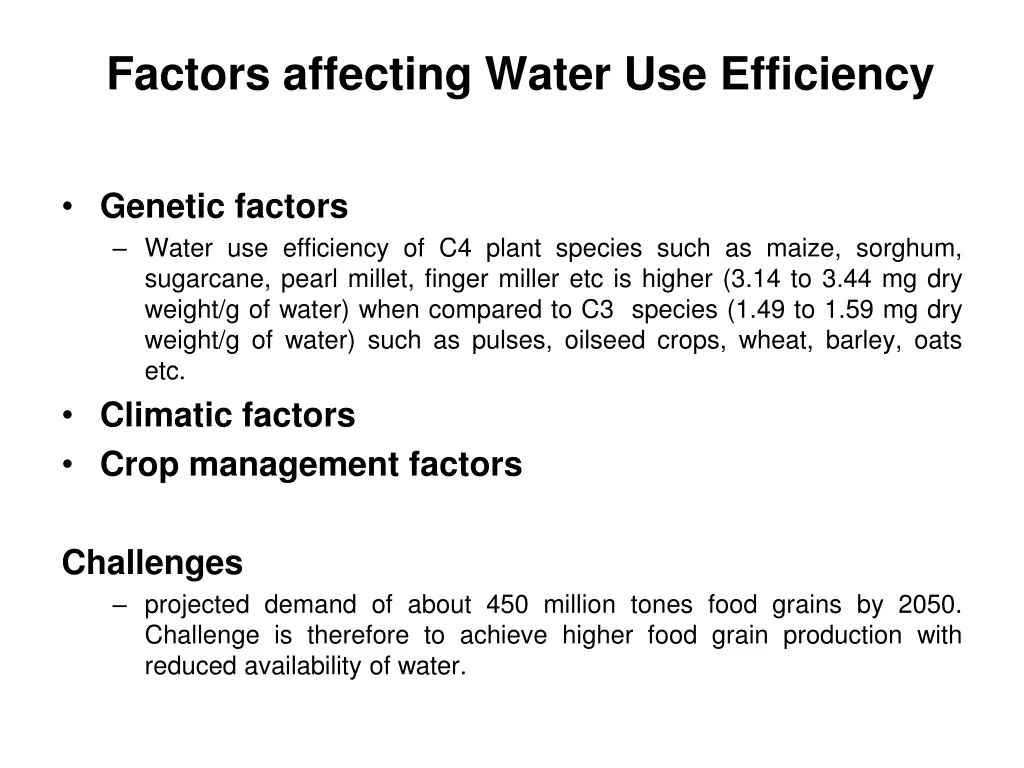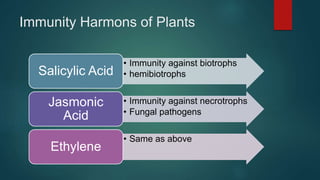Decoding Plant Stress: A Comprehensive Guide to Understanding and Mitigating Environmental Challenges
Plants, the silent architects of our ecosystems, stand as testaments to resilience. They endure the sun’s relentless gaze, the chilling grip of winter, and the persistent thirst of drought. But, like all living organisms, plants are not invincible. They experience stress, a complex physiological response to adverse environmental conditions. Understanding plant stress responses is not merely an academic exercise; it’s crucial for ensuring food security, protecting biodiversity, and adapting to the ever-changing climate. This guide delves into the intricate world of plant stress, exploring its various forms, the underlying mechanisms, and the strategies we can employ to help our green companions thrive.
What is Plant Stress? A Deep Dive
Plant stress is essentially a plant’s reaction to any environmental factor that threatens its normal functioning, growth, or survival. These factors, known as stressors, can be biotic (living) or abiotic (non-living). When a plant encounters a stressor, it triggers a cascade of physiological, biochemical, and molecular responses. The nature and intensity of these responses depend on the type of stress, its severity, and the plant species involved. It’s a complex interplay of defense mechanisms designed to protect the plant and restore homeostasis.
Biotic Stressors: The Living Threats
Biotic stressors are those originating from living organisms. These include:
- Pathogens: These are disease-causing organisms like fungi, bacteria, viruses, and nematodes. They can infect plants, disrupting their normal functions and causing diseases like rust, blight, and wilting.
- Herbivores: Animals that consume plants, such as insects, nematodes, and larger animals like deer and rabbits, also impose stress. Their feeding can damage plant tissues, reduce photosynthesis, and make plants more vulnerable to other stressors.
- Competition: Plants compete with each other for resources like sunlight, water, and nutrients. This competition can lead to stress, especially in crowded environments.
Abiotic Stressors: The Environmental Challenges
Abiotic stressors are non-living environmental factors that negatively affect plant growth and survival. They are often linked to climate and geographical conditions, and include:
- Drought: Water scarcity is a major stressor, particularly in arid and semi-arid regions. Plants respond to drought by closing their stomata (pores on leaves), reducing water loss, and developing deeper root systems.
- Temperature Extremes: Both heat and cold stress can be detrimental. High temperatures can denature proteins and disrupt cellular processes, while freezing temperatures can cause ice crystal formation within cells, leading to cellular damage.
- Salinity: High salt concentrations in the soil can interfere with water uptake and nutrient absorption, leading to salt stress. This is a growing problem in many agricultural areas.
- Nutrient Deficiency: Lack of essential nutrients like nitrogen, phosphorus, and potassium can limit plant growth and development, making them more susceptible to other stressors.
- Heavy Metals and Pollution: Exposure to pollutants like heavy metals (lead, cadmium) and air pollutants (ozone, sulfur dioxide) can damage plant tissues and disrupt physiological processes.
- Light Stress: Too much or too little light can also stress plants. Excessive light can damage photosynthetic machinery, while insufficient light limits photosynthesis.
The Physiological and Molecular Responses to Plant Stress
When a plant encounters a stressor, it initiates a complex series of responses to cope with the challenge. These responses involve changes at the physiological, biochemical, and molecular levels.
Physiological Responses: The Visible Adaptations
Physiological responses are the observable changes in a plant’s form and function. Some common physiological responses to stress include:
- Stomatal Closure: To conserve water during drought or heat stress, plants close their stomata, reducing water loss through transpiration.
- Reduced Growth: Under stress, plants often slow down their growth rate to conserve energy and resources.
- Changes in Leaf Morphology: Leaves may become smaller, thicker, or change their orientation to reduce water loss or protect against excessive sunlight.
- Root Development: Plants often develop deeper or more extensive root systems to access water and nutrients in stressful environments.
- Accumulation of Compatible Solutes: Plants accumulate small organic molecules (like proline and glycine betaine) to protect cells from dehydration and maintain osmotic balance.
Biochemical Responses: The Chemical Defenses
Biochemical responses involve the production and activation of various molecules to protect the plant from stress. These include:
- Production of Reactive Oxygen Species (ROS) Scavengers: Stress often leads to the production of ROS (like superoxide and hydrogen peroxide), which can damage cells. Plants produce antioxidants (like superoxide dismutase, catalase, and glutathione peroxidase) to neutralize ROS.
- Synthesis of Stress Hormones: Hormones like abscisic acid (ABA), ethylene, and jasmonic acid play crucial roles in stress responses. ABA, for example, is a key regulator of stomatal closure during drought.
- Production of Secondary Metabolites: Plants produce a wide array of secondary metabolites (like flavonoids, alkaloids, and terpenoids) that can protect against herbivores, pathogens, and UV radiation.
Molecular Responses: The Genetic Switches
Molecular responses involve changes in gene expression that lead to the production of stress-related proteins. These include:
- Activation of Stress-Responsive Genes: Stress triggers the activation of genes involved in various defense mechanisms, such as those encoding antioxidant enzymes, stress hormones, and protective proteins.
- Transcription Factors: These proteins regulate the expression of stress-responsive genes. They bind to specific DNA sequences and either activate or repress gene transcription.
- RNA Processing and Post-Translational Modifications: These processes regulate the stability and activity of mRNA molecules and proteins, respectively, further fine-tuning the plant’s response to stress.
Specific Stress Responses: A Closer Look
Different types of stress elicit unique responses in plants. Here’s a look at some examples:
Drought Stress
Drought stress is a significant threat to crop production worldwide. Plants respond to drought through a combination of mechanisms:
- Stomatal Closure: As mentioned earlier, stomata close to reduce water loss.
- Root Development: Increased root growth allows plants to access water deeper in the soil.
- Osmotic Adjustment: Accumulation of compatible solutes helps maintain cell turgor pressure and protect cells from dehydration.
- Gene Expression: Activation of genes involved in drought tolerance, such as those encoding aquaporins (water channel proteins) and stress-protective proteins.
Heat Stress
Rising temperatures pose a growing challenge to plant survival. Plants respond to heat stress through:
- Heat Shock Proteins (HSPs): Production of HSPs helps to protect proteins from denaturation and maintain their proper folding.
- Membrane Stabilization: Changes in membrane lipid composition can help maintain membrane fluidity and stability at high temperatures.
- Antioxidant Production: Increased production of antioxidants to scavenge ROS.
Salt Stress
Salt stress, often caused by irrigation with saline water or rising sea levels, affects plant growth and productivity. Plants respond to salt stress by:
- Ion Exclusion: Limiting the uptake of sodium and chloride ions.
- Ion Compartmentalization: Storing excess salt in vacuoles (cellular compartments) to protect the cytoplasm.
- Osmotic Adjustment: Accumulation of compatible solutes to maintain cell turgor pressure.
Pathogen Stress
Plants have evolved sophisticated defense mechanisms to combat pathogens. These include:
- Physical Barriers: The cuticle (waxy layer on the leaf surface) and cell walls provide a physical barrier to pathogen entry.
- Chemical Defenses: Production of antimicrobial compounds, such as phytoalexins, to kill or inhibit pathogens.
- Induced Systemic Resistance (ISR): Activation of the plant’s immune system, making it more resistant to future pathogen attacks.
- Hypersensitive Response (HR): A rapid and localized cell death at the site of infection, preventing the spread of the pathogen.
Strategies for Mitigating Plant Stress
Understanding plant stress responses is essential for developing strategies to mitigate the negative impacts of stress and improve plant health and productivity. Several approaches can be employed:
Breeding for Stress Tolerance
Selective breeding can be used to develop plant varieties that are more tolerant to specific stressors. This involves identifying plants with desirable traits (e.g., drought resistance, salt tolerance) and crossing them to create offspring with improved stress tolerance. This is a long-term strategy, but it is a sustainable way to improve crop resilience.
Genetic Engineering
Genetic engineering allows for the introduction of specific genes into plants to enhance their stress tolerance. For instance, genes encoding for antioxidant enzymes, compatible solutes, or stress-protective proteins can be introduced to improve a plant’s ability to cope with stress. This approach provides targeted solutions to specific stress problems.
Agronomic Practices
Various agronomic practices can be used to reduce stress and improve plant health. These include:
- Irrigation Management: Proper irrigation practices, such as using drip irrigation or scheduling irrigation based on plant needs, can help to avoid drought stress and waterlogging.
- Soil Management: Improving soil structure and fertility can enhance water retention and nutrient availability, reducing stress. This includes the use of cover crops, compost, and other soil amendments.
- Mulching: Applying mulch to the soil surface helps to conserve moisture, suppress weeds, and regulate soil temperature.
- Crop Rotation: Rotating crops can help to reduce pest and disease pressure, improve soil health, and prevent nutrient depletion.
- Optimizing Planting Dates: Planting crops at the optimal time can help to avoid periods of extreme heat, cold, or drought.
Application of Plant Growth Regulators (PGRs)
PGRs are chemicals that can influence plant growth and development. Some PGRs can be used to enhance a plant’s stress tolerance. For example, ABA can be applied to induce stomatal closure and reduce water loss during drought. PGRs should be used carefully and in accordance with established guidelines.
Use of Biostimulants
Biostimulants are substances that can improve plant health and stress tolerance. These include:
- Beneficial Microorganisms: Applying beneficial bacteria or fungi (e.g., mycorrhizae) can enhance nutrient uptake, improve root development, and protect plants from pathogens.
- Humic Acids: Humic acids can improve soil structure, enhance nutrient availability, and stimulate plant growth.
- Seaweed Extracts: Seaweed extracts can contain various beneficial compounds that can improve plant health and stress tolerance.
The Future of Plant Stress Research
Plant stress research is a rapidly evolving field, and new discoveries are constantly being made. Some key areas of future research include:
- Understanding the Complex Interactions: Research is focused on understanding how different stressors interact with each other and how plants respond to multiple stresses simultaneously.
- Developing Climate-Resilient Crops: Breeding and genetic engineering efforts are focused on developing crops that can withstand the challenges of climate change, such as drought, heat, and salinity.
- Harnessing the Power of Omics Technologies: Genomics, proteomics, and metabolomics are being used to gain a deeper understanding of plant stress responses and identify new targets for improving stress tolerance.
- Exploring the Role of the Microbiome: Research is focused on the role of the plant microbiome (the community of microorganisms that live in and on plants) in stress tolerance and how we can manipulate the microbiome to improve plant health.
- Precision Agriculture: Using technology like sensors and drones to monitor plant stress and apply targeted interventions to improve plant health and productivity.
Conclusion: Embracing the Resilience of Plants
Plant stress is an inevitable part of the plant life cycle, and understanding it is crucial for sustainable agriculture, environmental conservation, and global food security. By understanding the various types of stressors, the mechanisms of plant responses, and the strategies to mitigate stress, we can help plants thrive in a changing world. From the microscopic molecular interactions to the macroscopic adaptations of plant form, the study of plant stress reveals a profound appreciation for the remarkable resilience and adaptability of plants. As we continue to unravel the mysteries of plant stress, we move closer to creating a future where plants can flourish and provide for the needs of a growing global population.


